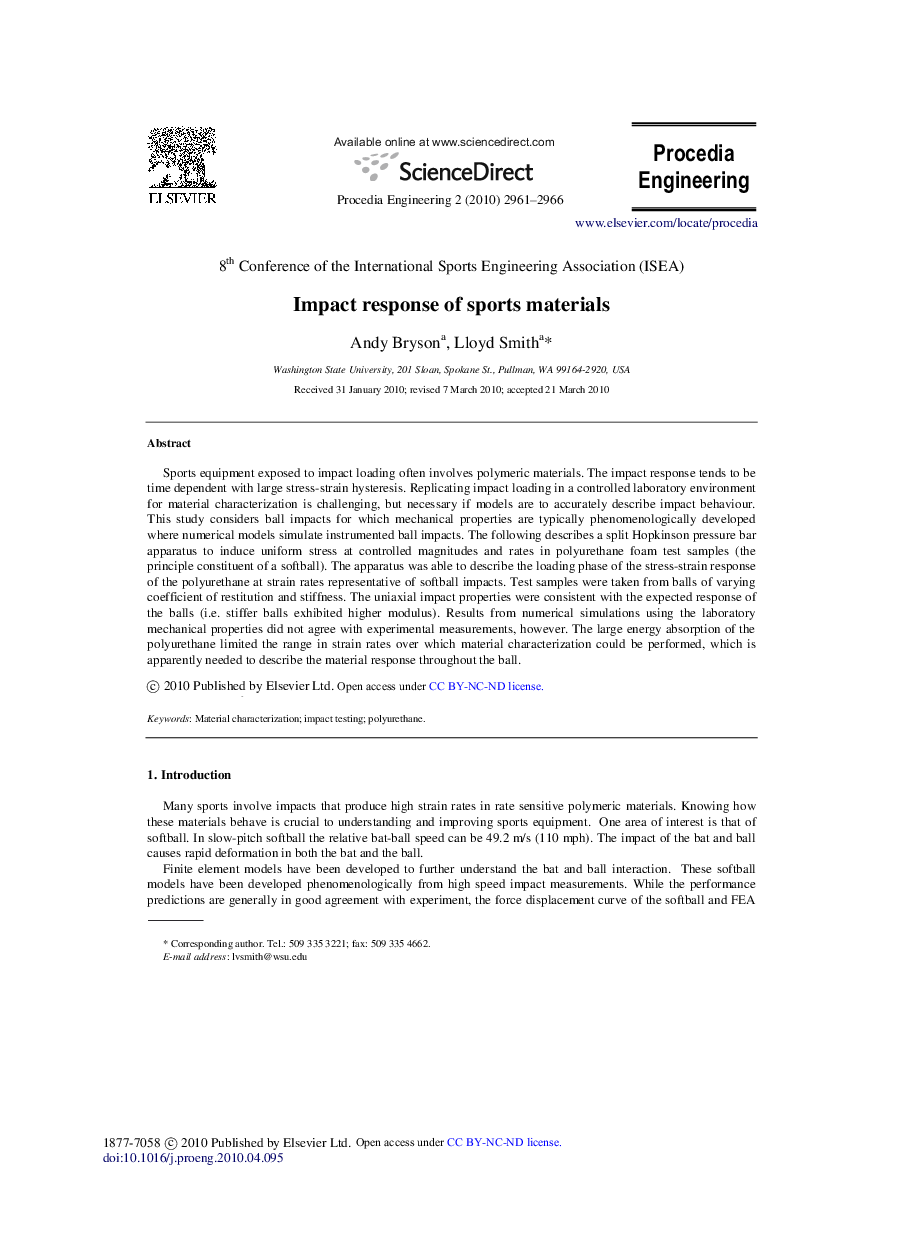| Article ID | Journal | Published Year | Pages | File Type |
|---|---|---|---|---|
| 864526 | Procedia Engineering | 2010 | 6 Pages |
Sports equipment exposed to impact loading often involves polymeric materials. The impact response tends to be time dependent with large stress-strain hysteresis. Replicating impact loading in a controlled laboratory environment for material characterization is challenging, but necessary if models are to accurately describe impact behaviour. This study considers ball impacts for which mechanical properties are typically phenomenologically developed where numerical models simulate instrumented ball impacts. The following describes a split Hopkinson pressure bar apparatus to induce uniform stress at controlled magnitudes and rates in polyurethane foam test samples (the principle constituent of a softball). The apparatus was able to describe the loading phase of the stress-strain response of the polyurethane at strain rates representative of softball impacts. Test samples were taken from balls of varying coefficient of restitution and stiffness. The uniaxial impact properties were consistent with the expected response of the balls (i.e. stiffer balls exhibited higher modulus). Results from numerical simulations using the laboratory mechanical properties did not agree with experimental measurements, however. The large energy absorption of the polyurethane limited the range in strain rates over which material characterization could be performed, which is apparently needed to describe the material response throughout the ball.
